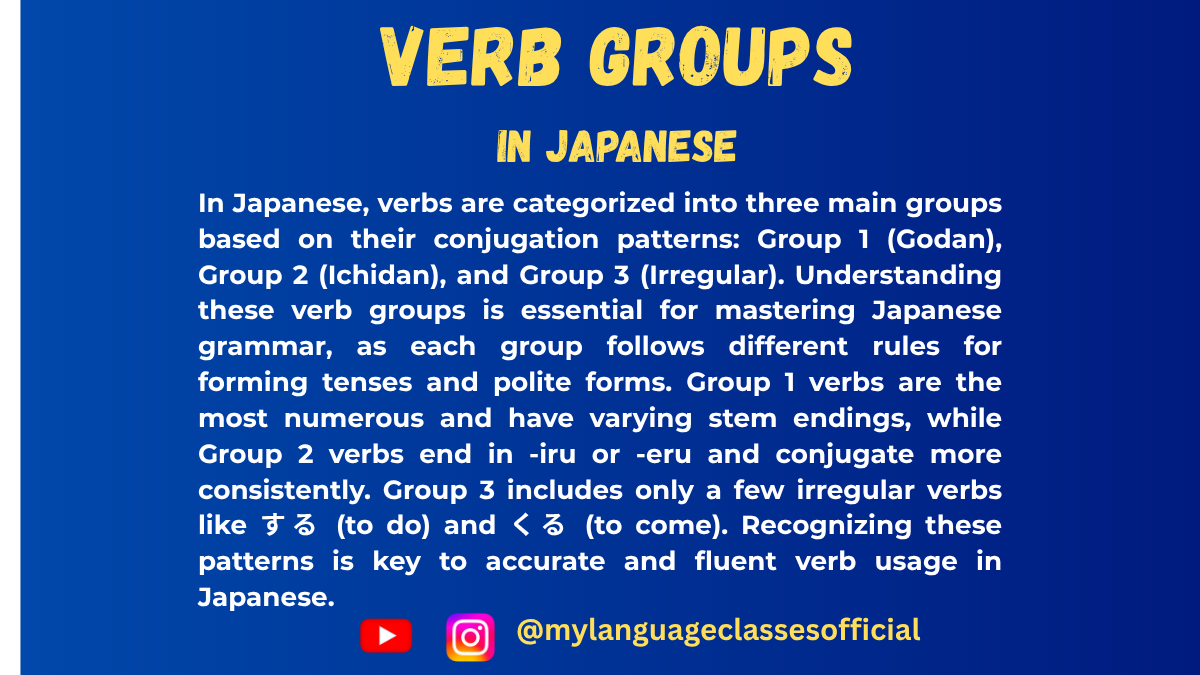Your cart is currently empty!
Tag: ichidan verb conjugation chart with examples

Japanese Verb Groups Explained: Godan, Ichidan and Irregular Verbs for Beginners
Understanding Japanese Verb Groups: A Beginner’s Guide
Learning how to categorize Japanese verbs is one of the first steps to mastering the language. Verbs are divided into three groups based on their conjugation patterns, making their usage systematic. Let’s explore … Read more

